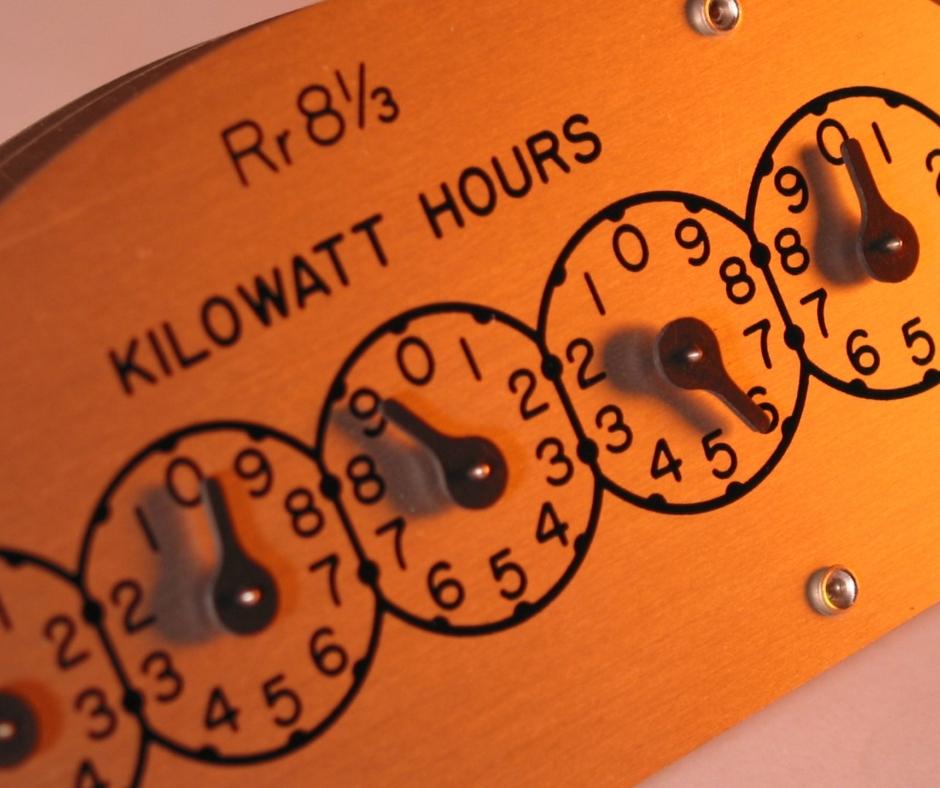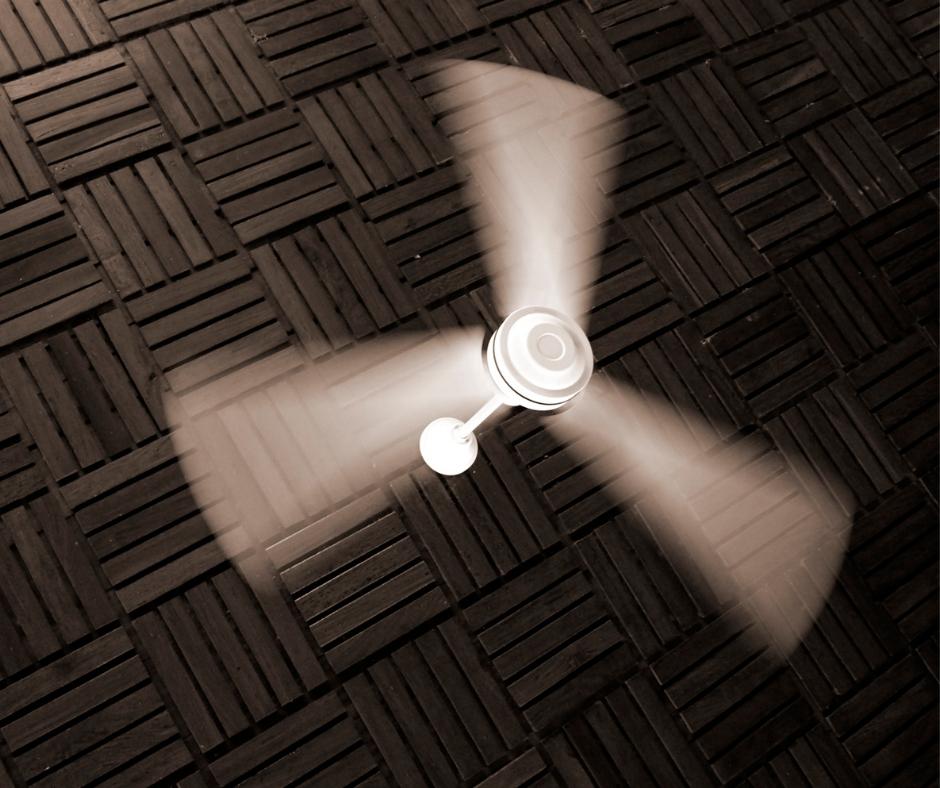Knowing the right size and design of a ceiling fan aren’t the only things to consider when buying one. You should also ask yourself how much electricity it will use.
There are a couple of good reasons for that. The first is that you have to pay for it every month when your electrical bill arrives, and the second is that you’ll want to know whether the electrical system in your room can handle it.
It can be a bit confusing and, since it involves electricity, even a little intimidating. We researched how much electricity a ceiling fan uses so we could answer all your questions.
In This Article We'll Discuss
How Much Electricity Does a Ceiling Fan Use?

Compared to air conditioners, ceiling fans use very little electricity. But, trying to figure out exactly how much electricity they use can be complicated. There are several things that can affect how much they use.
Almost all ceiling fans use fewer than 150 watts of electricity, mostly in the 10-120-watt range. That’s a little less than the amount a curling iron uses. An air conditioner, by contrast, uses between 750-3,500 watts.
Not all fans are created equal, however. Some fans use more electricity.
Technology has allowed for electrical fixtures to be more energy efficient, especially as concerns for carbon footprint have gained traction. Newer fans use less electricity than older fans.
Size matters, too. You need bigger fans for bigger rooms; not just to keep the air circulating, but because they also look better. Bigger fans have bigger motors, which tend to use more electricity.
The amount of electricity a ceiling fan uses will also depends on its speed. Fans set to spin at the fastest speed will use more electricity than fans set on the slowest setting.
There is one element that you control directly, which is how much you use your fan. A small ceiling fan with a new, efficient motor used non-stop half of the year will still use more electricity than a giant, old fan that gets used for half an hour a day during the three hottest months of the year.
How Much Do Ceiling Fans Add to Your Electric Bill?

Compared to a window air conditioner — and especially to a full household HVAC system — ceiling fans are very cheap. But, we get that cheap is a relative term and, if you’re living on a tight budget, you probably want more specifics.
Let’s calculate the cost of running a fan that requires 100 watts of electricity in a location with an electric rate of 15 cents per kilowatt-hour. Both of those are within the average ranges of fan energy consumption and current electric rates in the United States.
To calculate, multiply the amount of electricity needed to power your fan by the price per kilowatt-hour. That will reflect the price in dollars: 100 x .15 = 15. That looks like $15 an hour, which is very high! Fortunately, you’re not done.
You aren’t charged by watts, but by the thousands of watts used, or kilowatts. So, you need one more calculation, dividing 15 by 1,000, or 15 / 1,000 = .015. That’s the cost in dollars: .015 dollars.
To get the cost in cents, multiply by 100: .015 x 100 = 1.5.
Running a fan that requires 100 watts of electricity in a place where the electric rate is 15 cents per kilowatt-hour will cost 1.5 cents per hour. So, if you run that fan for about eight hours a day, it will cost you 12 cents.
Do Ceiling Fans Use a lot of Electricity?
Ceiling fans are among the worst heating and cooling appliances when it comes to electricity consumption. The reason for that is pretty obvious— they don’t warm or cool the air, they just create a breeze.
Most ceiling fans use between 10-120 Watts of electricity per hour, which translates to .01 to .12 kilowatts.
If the average toaster were to run for an hour straight, it would use approximately .04 kilowatts of electricity. So, running a ceiling fan uses about as much electricity as using a toaster.
However, it’s not quite an apples-to-apples comparison. If you ran a toaster for an hour straight, you’d burn it out quickly. Plus, you’d have enough toast to feed an army. But it does provide a good approximate comparison to get an idea of how much electricity a ceiling fan uses.
Is Running a Fan all Night Expensive?
Expensive is another relative term. It depends entirely on whether you live on a very tight budget or if you don’t like to spend money unnecessarily. So, we’ll give you a quick cost analysis and allow you to determine if it’s expensive.
Running an 80-Watt ceiling fan costs 1.2 cents per hour if your local electric rate is 15 cents per kilowatt-hour. Both of those are pretty average figures to use.
If left on for an eight-hour night, it will cost you 9.6 cents a night. If you do that over the course of a 30-day month, it will cost you $2.88. And, if you leave the fan on every night of the year, it’s $35.04.
An air conditioner will cost you a lot more money to operate, but it will actually cool your living space. A fan will just create a breeze. We think the best question to ask yourself isn’t whether a fan is expensive to run, but whether you’re getting the most out of what you’re paying.
Does Leaving a Ceiling Fan on Waste Electricity?

When it comes to electricity usage, there are two kinds of people. Those who believe that leaving any appliance on when not needed wastes electricity, and those who are okay with allowing something to run if it doesn’t drive up the electricity bill.
If you fall into the first category, then you believe it wastes electricity. But ceiling fans use very little electricity, especially compared to air conditioners. So, leaving one on will only waste a little bit of electricity and only end up costing you a few pennies.
Also, you might want to leave your fan running when you aren’t in the room. It takes a little while for the fan to create a breeze, so if you leave it running there will already be a breeze when you walk back into the room.
Conclusion
Ceiling fans are a great low-energy alternative to running an air conditioner. Fans use about one-tenth the electricity that air conditioners use. Of course, you don’t get the cooling power of an air conditioner, but sometimes all you need is the breeze.
That reduced electricity usage means more money in your pocket. Most fans cost less than a penny an hour to run. So, you can run them longer and your electrical bill won’t change dramatically.
We hope you have a better understanding of how much electricity a ceiling fan uses and how much running one will cost you. If you found value in this article, we’d encourage you to leave a comment below. You can also share it on your social media networks.

